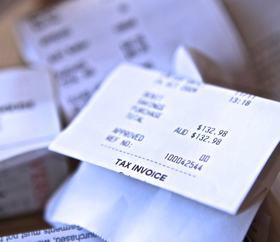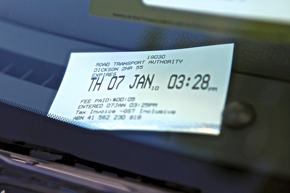 Goal: To stop paying so much bloody money to Treasurer Jim Chalmers (and maybe even get some back from him).
Goal: To stop paying so much bloody money to Treasurer Jim Chalmers (and maybe even get some back from him).Taxation

One of the two things in life that’s guaranteed.
Despite what you may think of it, Australia’s income tax system is known as a progressive tax system. This means that the more you earn, the more you are taxed. This system also means that those people who benefit the most from tax concessions and are able to reduce their tax significantly, are those who earn the most. So they end up paying less. And they are the group who should be paying the most. Thus begins the confusion that is taxation.
Audits and compliance
The tax system allows deductions and credits for eligible people to lower their tax, including low income earners. Please remember that claims for deductions totalling more than $300 require written evidence – usually just receipts which you can keep in paper or electronic form, including photos of the original receipts. The easiest way to keep track of deductions is via the ATO app. You should always pay the tax you are legally obliged to, as an audit by the tax office resulting in you having to pay the tax you owe them + interest + penalty tax, costs a lot more than what you avoided paying in the first place. Penalty tax rates range from 25-75% of the amount in question, depending on whether you have just made a mistake, were careless or deliberately evaded paying your tax. As Jerry said once in an episode of Seinfeld – “An audit is the equivalent of a complete rectal examination”.
The Australian Taxation Office (ATO) has a number of ways of keeping track of taxpayers to see who is and is not paying their fair share, but the ATO’s surveillance only goes so far. If you know of an individual or business involved in tax evasion and reckon it’s about time they pulled their weight, fill out this confidential tax evasion reporting form. Tax evasion is quite often linked to organised crime so don’t think of reporting as being a dobber. As the ATO states on their website – “Tax crime threatens the revenue used to provide services to the community and disadvantages Australians who do the right thing.”
Case study
Taxation is something where you can be stung with a large bill out of the blue, as happened to DN. This is his story in his own words.
“So, I have a small business on the side that I run with a mate – we’ve been going over 10 years. A few years back we changed accountants and it turns out that our old accountant did more than we knew for us, including sorting all our tax returns, BAS, etc. The new accountant didn’t provide the same level of service.
So we were stung with a huge $46,000 tax bill. Now, we are not a big company, that’s more than the wage of one of the managers of the company, and me – I don’t even draw a wage! It’s really just a hobby! Big problems… but, life goes on. We agree with the ATO to pay $2,000 a month to pay it off.
Then we lose our biggest client. Cashflow – gone. We make a new arrangement to pay $500 here, $1,000 there with the ATO (all up, we still owe something like $26,000).
So, I re-mortgage my home – over the 80% level, so I need mortgage insurance and all this during the Global Financial Crisis! Then I wrote a letter to the ATO.
Weeks go by, months seem to go by – our online ATO portal tells us a response to our letter is pending…
Then one night I walk in the door at home – (and things at home aren’t great, given my wife has just played a role in re-financing our home and taking on new debt…) and I get a phone call –
ATO:“Hi there, this is Michael from the ATO.”
ME: “Yeah, hi Michael” – Thinking it’s a gee up.
ATO: “I”m calling about your letter.”
ME: “OK” – still thinking my mate’s having me on.
ATO: “My role here is to come in after the office has closed and look over some of the files lying around for closure or response, I’ve been looking through yours.”
ME: “Yeah, OK, tell me – how much do we owe?” and he proceeds to tell me to the cent how much we owe – now I know this is real.
ATO: “I’ve looked through your circumstances and can see you’ve tried very hard to pay off this debt, and have taken on a large personal responsibility by re-financing your home… so I’ve been able to waive the fees for you.”
ME: “REALLY, that is unbelievable… how much do we owe now?”
ATO: “Well, the fees were about $4,000 and I have the power to reduce things by more than that… so it’s just the click of a button… and I’ve been able to waive the interest as well.”
ME: “Are you kidding?”
ATO: “No. So the total you need to pay is $12,900.”
ME: “JESUS, YOU’VE JUST CHANGED MY LIFE – I KID YOU NOT – CHANGED MY LIFE!”
ATO: “Well you have clearly been trying to get through this, and that is what stands out to me, you’re not just pleading whilst not trying yourself.”
Anyway, seriously changed my life… so many lessons…”
DN was bloody lucky – not too many people have a win with the ATO but it just goes to show there is no harm in asking.
An audit by the ATO will not happen to everyone but those who have experienced one know they are not pleasant, especially if you have not paid the tax you should have, due to failure to disclose all your income or fudging your deductions. Just as the person who fails to vote may not complain about the government, the person who does not pay all their tax may not complain about high rates of taxation (unless they live in Greece, where it appears it is acceptable to not pay taxes, then torch buildings in Athens to protest against government plans to fix the country). Australians in particular have little reason to complain as we have the sixth lowest rate of tax in the OECD. Yes, ok, I will now step off my soapbox.
As former Reserve Bank Governor, Bernie Fraser says “Taxation is the cost of living in a civilised society.” I guess I’d rather reside and pay tax in Australia, than receive my income tax-free and live in a lawless country.
Each year the tax office signals occupations it is going to focus on for compliance. This financial year they are targeting anyone claiming work-related expenses (particularly those who have been working from home), deductions and income from rental properties, and capital gains/losses related to cryptocurrencies. If you tick any of those boxes I hope you have done your tax returns over the last five years honestly, as you have a higher chance than average of being audited. If you haven’t actually done your tax returns over the last five years, ignoring them won’t make them go away. Unfortunately it’s one of those things you’ve just got to do. That is, of course, if you are required to lodge a tax return in the first place, as not everyone is. Visit do I need to lodge a tax return to find out if you can avoid yourself the hassle. If you do have to lodge, punching your figures into the ATO’s Tax Calculator will give you an idea of how much you will have to pay or the size of your refund.

If you expect a refund the money should appear automatically in your bank account within about 10 days of submitting your tax return (assuming the ATO doesn’t ask for further evidence of a claim). The Tax Office will never send you an email with details of your refund and asking you to punch in your personal info into a website. There are a bunch of refund scams out there, and while a couple are fairly obvious, some look pretty convincing
The table below shows the marginal rates for resident individuals for the 2023-24 financial year. Keep in mind that this includes all income, including things like interest, earned between July 1st of one year and 30th June the next, not just the amount you receive from your job or government payments.
Marginal Tax Rates for Resident Individuals, 2023-24 Financial Year
| Amount earned | Tax payable |
|---|---|
| 0 – $18,200 | $0 |
| $18,201 – $45,000 | 19% over $18,200 |
| $45,001 – $120,000 | $5,092 + 32.5% over $45,000 |
| $120,001 – $180,000 | $29,467 + 37% over $120,000 |
| Over $180,000 | $51,667 + 45% over $180,000 |
The Medicare levy of 2% of your total taxable income is payable on top of your other tax, and rebates are available for people earning under $126,000, those with dependents and people receiving certain government payments.
Please don’t be confused into thinking that your marginal rate is the amount of tax taken out of all the money you earn. It is the amount of tax paid from each additional dollar you earn.
Income Total tax paid Marginal Rate % Average Rate % $25,000 $688* 21 2.7 $50,000 $6,560* 34.5 13.1 $75,000 $15,435 34.5 20.6 $100,000 $24,536 34.5 24.5 $150,000 $44,267 39 29.5 $185,000 $58,317 47 31.5 * Includes Low Income Tax Offset (LITO). Table assumes private health insurance is held by taxpayer.
So if you earn $50,000 in the 2022-23 financial year you will not pay 34.5% of your entire income in tax. It works out to be 13.1% of that amount, in dollar terms it’s $6,560. As you can see, the marginal rate and the average rate are quite different. I have added the 2% Medicare Levy onto those marginal rates in the previous table because some people refer to marginal rates with the Medicare Levy included and some people refer to marginal rates without the extra 2% tax. I’ve included this table just to show that you probably pay less of a percentage of your income in tax than you feared. Average tax percentages are always lower than marginal rates and are never used in accounting terms.
The ATO website is a shocker for trying to find stuff by using the search box. Sure, you will find what you are looking for, along with 12,804 other articles containing the same words. For a better search just go straight to Google, type in your keywords then look for the sites with ato.gov.au in them. Being an accountant, Claudia does this successfully all the time. If you want to try your luck, here’s the ATO home page.
Taxation example
Let’s look at an example of someone earning an annual salary of $55,000. If you want to work out your own tax you don’t have to do it the long way as I have set it out below, it’s much easier to use one of the tax calculators from the Australian Tax Office’s website (in the link above). This person has bank interest of $100 per annum and total deductions of $250. They also have an accumulated HELP debt. How much tax do they pay? It’s worked out as follows. Their income, being salary and interest, are added together to arrive at the assessable income ($55,100), then the deductions are taken off.
$55,000 salary + $100 interest = $55,100 assessable income
$55,100 assessable income – $250 deductions = $54,850 taxable income
The taxable income (in this case $54,850) is what you are taxed on, which is why so many people like to maximise their deductions, lower their taxable income and pay less tax. This amount is in the 32.5% marginal rate so it’s worked out as $5,092 + 32.5% over $45,000. The amount over $45,000 is $9,850. Multiply that by 32.5% then add this to the $5,092 and you end up with $8,293.25. Then add 2% of the total taxable income for the Medicare Levy for a total of $9,390.25. If this person had no HELP debt, this is all the tax they would pay, minus the Low Income Tax Offset (LITO). If you’re earning less than $66,667 then you should be getting at least a bit of a tax credit via the LITO.
With the Low Income Tax Offset, the effective tax free threshold in the 2023/24 financial year is $23,227. This makes things a bit confusing, but basically if you earn up to $23,227 in a financial year you pay no tax. It doesn’t mean the first $23,227 you earn in a year is not taxed, only the first $18,200. And that doesn’t mean that the first $18,200 you earn starting July 1st won’t be hit with tax, tax is taken out of your pay at the proportionate rate that you will likely pay it over the whole financial year. Sorry, I should’ve warned you to grab a coffee before I started that paragraph.
Tax on $54,850:
5,092 + 32.5% over 45,000
= 5,092 + 32.5% x 9,850
= 5,092 + 3,201.25
= 8,293.25 + 2% x 54,850 (for the Medicare Levy)
= 8,293.25 + 1,097
= 9,390.25

Unfortunately they still have to pay another 1% of their taxable income for their HELP debt, to a total of $9,938.75 in tax before the Low Income Tax Offset is given back.
9,390.25 + 1% x 54,850 HELP debt
= 9,390.25 + 548.50
= 9,938.75 – 177.25 LITO= $9,760 total tax payable
When this person pays off their HELP debt they will get an effective tax-free pay rise of $548. Why effectively tax-free? Because if they received a pay rise of $548 from their employer that would then be taxed at 34.5%. Whether this person has a HELP debt or not, they will still receive the Low Income Tax Offset – in this case $177.25.
It is handy to know what your marginal rate is. By marginal rate I am of course referring to the highest percentage of tax taken out of your income.
If, for example, you work full time and are earning in the 32.5% marginal tax bracket, and you have a partner who is not currently working because they are studying or raising kids, any investments may be better placed, for tax purposes, in the name of the non-working partner. Any money earned from these investments counts as income for them, but they receive their first $18,200 for the financial year tax free. If that investment earned $2,500 in a financial year, you could save yourself over $862 in tax. So you should consider having any investments in the name of the lowest income earner.
This doesn’t necessarily work the same way if you have kids and put the investment in their name. Investment income over $416 per annum in a child’s name will be hit with a whopping 66% tax, until they earn $1,307 when their tax rate drops to 45%. But this doesn’t mean that a 16 year old working part time will be taxed 45% or 66%, they’re taxed at adult rates even though they’re not an adult. (I cover children’s tax rates in heaps more detail in the Kids And Money topic).
Sound confusing? It is. I did that on purpose. Sorry if your brain is hurting and you are excused if you couldn’t follow the example above for working out how much tax was payable.

It’s amazing this man was never an accountant.
Because the tax system is so complex (and extremely boring) you may wish to see a tax agent or accountant (an extremely boring person – sorry Claudia) to sort out your tax return. A great advantage of lodging your tax through a tax agent or accountant is the extra time you have to do it. Do your own tax and you must lodge it by October 31st each year, pay someone else and you have until May 15th of the next year. Lodge your return late and you can expect to be hit with $170 per month charges.
If you want to have a crack at doing your tax yourself, the quickest way to do it is at home via myTax. Using myTax you will find that lots of the figures have been pre-filled in for you by the ATO’s data matching technology, so don’t even think about cheating this system. MyTax is designed to cater for simple and complicated personal tax returns. To access myTax you first have to register with myGov then link to the tax office. It’s a bit of stuffing around to set up but you only have to do it once and you may have already registered an account for Medicare, Centrelink or child support purposes.
If you want some help filling out your tax return, low income earners (earning under $60,000) with uncomplicated tax returns can get free assistance from the ATO via their Tax Help program. This allows those who have simple wages, government payments and even some income from managed funds to sit down with volunteers to help them with their tax returns from July to October each year. The service is provided in person Australia wide. But forget about it if you are running a business, have sold shares in the last financial year or are a rental property mogul, as you won’t qualify.
.
It is essential to see an accountant (and I’d recommend a solicitor too) if you ever want to start something complex like a family trust, a family company or a self managed superannuation fund. The accountant’s and tax agent’s fees are tax deductible and they will likely save you more in tax than they cost.
I’m not going to go on about tax in much detail because it really should be left to the experts and it really can bore the hell out of you. There are only three areas that I am addressing.
Capital Gains Tax
The first is capital gains tax. As we looked at in the Investment topic, capital gains are the increase in value of growth assets (property and shares) and the amount of capital gains tax you pay can vary from none to too much.
If you buy a growth asset such as shares in a company, for $5,000 today, any increase in value of those shares will be subject to capital gains tax. Let’s say they rise to $6,000 over a two year period at which time you sell them. The amount of the increase, $1,000, is the amount assessable for capital gains tax. Because you held onto the asset for longer than 12 months the amount you are taxed on for capital gains tax is reduced by 50%. This $500 (50% of $1,000) is then included in your other income for the financial year and taxed at your marginal rate. If your marginal rate is zero, you won’t pay any capital gains tax in this example. If you are on the top marginal rate of 47% you would multiply that by $500 to end up paying $235 in capital gains tax.

Capital gains tax is complicated depending on when and how the asset was acquired, when it was sold, if you have any capital losses to offset the gain and what your asset is (for example your principal residence – your own home where you live – is not hit with capital gains tax). But, the one important thing to remember for capital gains tax is this: hold onto assets which will be hit with capital gains tax for at least 12 months to get a discount on that tax of 50%. If you sell within 12 months you will pay double the amount of tax. You shouldn’t sell growth assets within 12 months because, as we looked at in the Investment topic, they should be held for the long term – around seven years or more.

Negative Gearing
Negative gearing is a term most of us would have heard. The gearing part means borrowing to invest and it can be negative or positive. It is a strategy used to allow people to purchase an investment they would otherwise not be able to. Gearing can increase the overall return to the investor, but of course, increased return means increased risk. So gearing will either boost your returns or multiply your losses.
For example, you wish to buy an investment property but have only got $20,000 for the deposit and the property costs $400,000 (I am ignoring legal fees, stamp duty, repairs, etc for simplicity. If you are buying the property you can’t afford to ignore these extras). You then gear the investment (i.e. borrow money) to the tune of $380,000. The interest on the loan at 6% is $22,800 per annum. With all the expenses of rates, maintenance, property management fees, water, etc added to the interest payment, the total cost to you comes to $28,000 a year. The income from rent is $380/week or $19,760 per annum.
Borrow $380,000. Interest = $22,800. Extra expenses bring costs to $28,000.
Rental income is $380/week = $19,760.
$19,760 – $28,000 = minus $8,240 (over eight grand in the red).
Because the rental income is less than the costs of holding onto the investment, the property is negatively geared. The negative bit refers to the situation where you have less money coming in as income, than you are having to pay in interest and other expenses. The expenses will be tax deductible for you but you will still be spending more money on the property than you receive from it, and all money received from rent is taxable at your marginal rate. The extra $8,240 must come from your other income throughout the year. So in the short term, gearing is gonna involve some pain and you need to make sure you have the disposable income to help ease that pain.
The real benefit to the investor who negatively gears comes when they sell this property in seven years for $550,000 and make a capital gain of $150,000 which more than compensates for the negative cash flow over the previous seven years. Sounds good doesn’t it? As property is a growth asset, you would be unlucky not to see a decent increase in value over the long term (seven or more years). But it can, and does, happen.
Be warned that if the investment does not have enough capital growth to outweigh the costs every year, the investor loses, especially if they have to sell for less than the original cost of $400,000. If the investor had a larger deposit and didn’t have to borrow as much and therefore paid less in interest, but still received the same amount in rental income, the investment may be positively geared. This is where the income exceeds the interest and other expenses. With this scenario the risk is lowered and so is the overall return. If you did not need to borrow as much, a rise in interest rates would not affect you as much and you may not be forced to sell.

A small increase in interest rates may be too much for the investor who is too highly geared to handle and can wipe them out. This point is particularly relevant when interest rates will likely rise in the following months or years. If interest rates rise, there is greater expenditure to cover. If you put up the rent to try to compensate, your tenants may not be able to pay it so they move out. You are then left with a property that is providing no income but is now costing you more money to hold onto. You decide to sell but discover that there are many other people who have found themselves in the same situation as yourself, flooding the property market and forcing prices down. Yes, this is a worst case scenario, but you do need to understand all the possible risks with gearing.
Gearing, particularly negative gearing, is a risky strategy, made worse when interest rates start to rise at the same time as investment values falling. Because gearing involves increasing your risk level, the same point applies here as I made in the last topic – balls of steel. If you get stomach ulcers just thinking about a market downturn, they’re not made of steel. You should get personal financial advice from an independent financial planner before you consider gearing. There are many people who work for banks and real estate agencies who are more than willing to do the calculations for a negatively geared property, but they are likely to have a vested interest in your purchase, particularly a vested interest in you paying/borrowing a lot of money.
The investment you wish to negatively gear must be a good investment even without gearing, don’t ever purchase an investment based on the tax advantages alone otherwise you risk losing your money.
Back when I was living in the outer suburbs of Canberra, when I told people that I was moving and buying a home closer to work, I was often asked if I would keep my old place as an investment property. I would’ve been mad to do this because it would have meant having to borrow almost the entire amount for the new place – an ordinary mortgage which is not tax deductible. But then I would have had an investment property owned outright that I could have a tax deductible loan attached to. In this scenario you are much better off for tax reasons selling the home with no mortgage and using the proceeds to buy your new home, also with no mortgage (or a small mortgage). Then buy an investment property with an investment loan and claim the interest as a tax deduction.
I have used the example of an investment property being geared because it is the most commonly geared asset, but gearing can apply to shares and managed funds as well.
Salary Sacrificing

Cartoon courtesy of Michael Mucci.
The last area of taxation that we look at is salary sacrifice. Salary sacrificing, or salary packaging as it is also known, is where you decide to have a part of your regular pay taken out to pay for something before your pay is taxed. The end result is that you pay less tax because the amount of income you are assessed on for tax is reduced by the amount of the salary sacrificing. The downside is that you end up having less take home pay.
Huh?
Like all things tax, this is probably best explained with an example.
A person earning $127,000 without any salary packaging is in the 37% marginal tax rate and would pay a total of $34,428 in tax for the 2023-24 financial year. This leaves them with $92,572 in the hand.
Earning $127,000 with $0 salary sacrifice:
= $34,428 tax p.a.
= $92,572 after tax
This person is lucky enough to be able to salary package their mortgage repayments to a total amount of $26,430 per annum. So the $26,430 is taken out of their gross pay, put into the mortgage and reduces their taxable income by this amount. Tax on their adjusted taxable income of $100,570 comes to a total of $24,749 per annum which is $9,679 less tax than they would pay without any salary sacrificing.
Earning $127,000 with $26,430 salary sacrificing:
$127,000 – $26,430 = $100,570 adjusted income
= $24,749 tax p.a.
= $75,821 after tax
= $ 9,679 less tax paid
However, their take home pay is reduced from $92,572 to $75,821 per annum, an overall reduction of $16,751. The reduction in take home pay should not worry them because, due to the lower tax paid, they have in effect been able to make mortgage repayments of $26,430 (the amount they can salary sacrifice) which have only cost them $16,751.
At the same time, they have gone from paying tax in the 37% marginal rate to the 32.5% marginal rate, meaning each additional dollar of income earned would now be taxed 4.5% less.
Items that can be salary packaged will differ from one employer to the next but may include usual things like cars, laptops, and extra superannuation contributions.


If you’re lucky enough to work for a charity or hospital (“What!” yell the nurses, “Lucky?” – yes there is an upside to earning money by wiping bottoms), your employer will also allow packaging on a range of insurance premiums including health, income protection and motor vehicle insurance, child care fees, mobile phones, interest payments on an investment loan, professional membership fees, parking fees, school and tertiary education fees and, as we have just looked at in the above example, mortgage repayments.
Not all employees are able to take advantage of salary sacrificing and for those who are able to, the end benefit will vary depending on your individual circumstances, the item or items you choose to package and whether you will be hit with Fringe Benefits Tax. It just doesn’t stop getting complicated. Salary sacrificing is worth more to higher income earners than it is to people on lower incomes, which is why I used the example of a person earning 127 grand. If you can salary sacrifice mortgage payments you will probably benefit greatly from the arrangement.
As a general rule I would recommend you get a professional to look very closely at any arrangement where you are able to salary sacrifice extra superannuation contributions. This is because your employer is allowed to reduce the amount they are legally required to put into super by the amount you contribute yourself. For example, the minimum requirement for an employer to contribute to your super fund is 11%. You think this is too low and would like to increase that amount to 15% by salary sacrificing just 4% of your salary into super. 4% + 11% = 15% right? Not if your employer is stingy enough to reduce the amount they are contributing to your super to 7%. Add this to the 4% you put in and you still have the same 11% amount going into super as before you salary sacrificed. You need your contract to say that any salary sacrifice you make into super clearly states that your contributions are in addition to the existing 11% employer contributions.
To sum up taxation: pay your taxes and get a tax agent or accountant to help you out if you’re confused by it all. Hold onto growth assets for at least 12 months to get a 50% reduction on your capital gains tax, only enter into the area of gearing when you know and fully understand all the risks, and speak to an accountant if you want to take advantage of salary sacrificing.
Taxation Questions
1) You have come across an investment in a managed agribusiness scheme that allows up to a 100% tax deduction for individuals in the first financial year. The minimum investment amount is $5,000 (which you have ready to invest). The smartest thing to do is:
- Invest the $5,000 and claim a deduction for $5,000 when you do your tax return in July.
- Speak to an accountant about it before making a decision.
- Speak to a financial planner who sells the agribusiness investments about it before making a decision.
- Avoid the investment and put your money elsewhere.
- Answer a) is definitely wrong as you could pour your hard earned into a black hole where you never see a return even though you would get a tax deduction upfront. An accountant is the best person to speak to for tax, but this is an investment decision as well (an accountant will not know what is best for your investing situation). Any planner selling managed investments is almost certainly receiving a kickback from them so will not be impartial. Therefore the smartest thing to do is answer d).
2) The dumbest tax mistake is:
- Fudging your tax return, claiming deductions you didn’t make and not recording income you earned.
- Negative gearing into an investment when you have only allowed for interest rate increases of up to 0.5% from current levels.
- Attempting to set up a salary sacrifice arrangement for income you have already earned.
- Selling capital gains taxable assets within 12 months of purchase.
- All the above are equally dumb.
- Although e) is nearly right, a) is the one that could potentially see you sent to jail. The infamous American mafia boss, Al Capone, did not do time for the murders he committed. Rather, he was sent to Alcatraz for tax evasion.